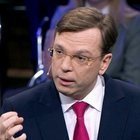Mishustin's 'national plan': how Russia to be withdrawn from 'coronacrisis'
On 3 June, Russian Prime Minister Mikhail Mishustin presented to President Vladimir Putin a plan for restoring the economy and incomes of Russians called 'The national action plan for restoring employment and incomes, economic growth and long-term structural changes'. Realnoe Vremya has read the full version of this document — it contains (quite briefly, sometimes even abstractly) both widely announced events and some new initiatives. As a result of the implementation of this plan, the government expects that the decline in the welfare of the country and its citizens will be replaced by growth — in some cases even greater than in the “pre-crisis” times. However, the “Mishustin's plan” received positive feedback not from all experts.
What does the “Mishustin plan” lead to?
According to the document, which is exactly 140 pages long, the Russian government has three goals: to ensure a steady growth in real incomes, reduce unemployment to no more than 5%, and achieve a trajectory of sustainable GDP growth of at least 2,5% on an annual basis. The plan is designed for the period from June 2020 to December 2021. Finally, taking into account the closure of borders, import substitution has made a step forward (the document separately notes the demand for “safe and high-quality holidays within the country”).
In particular, the government intends:
- to ensure the growth of real wages by at least 2,5% per year and reduce the share of the population with incomes below the subsistence minimum below the level of 2019, and increase retail trade and the volume of paid services by 3% and 2,5% per year, respectively;
- to restore the number of employed in SMEs and individual entrepreneurs at the level of the first quarter of 2020; the growth rate of turnover of SMEs should be higher than the growth rate of the economy as a whole. Separate indicators are set for high-tech companies — their number should grow by at least 10% per year;
- to ensure the growth of investment in fixed assets, it should reach the level of at least 4,5% on an annual basis;
- to ensure the growth of non-resource non-energy exports, it should be at least 5% on an annual basis. The growth of the index of industrial production of the manufacturing industry should reach the level of at least 3% on an annual basis;
- To increase the economy's resilience to such shocks. This is assessed by two indicators: the return to the trajectory of reducing mortality rates set in the national project Healthcare, and the fulfillment by the subjects of their obligations to reduce the debt burden in accordance with previously existing standards.
Why it won't be easy
From the very beginning, the authors of the document make it clear that everything will not be so easy. For example, the closure and contraction of the most affected industries have created a “canopy” of unemployment, as well as people who are formally employed but are on unpaid leave, idle or underemployed. At the same time, the termination of temporary support measures may provoke even more unemployment. Investments are falling against the background of general uncertainty (by the end of 2020, it is expected to fall by 12%), and the most affected industries will not be able to recover just like that when the economy “opens”.
At the same time, the preamble of the document also notes the new opportunities provided by “the coronacrisis”, and on which the government will rely. First of all, we are talking about the development of “new forms of employment and training” due to the mass transition to remote work. At the same time, the acceleration of digitalisation of all processes in the economy is also mentioned. Besides, “the coronacrisis” has resulted in a number of regulatory easing measures in many sectors, the rate on such simplification and optimisation will continue in the future.
What the government is going to do
To increase real incomes, the government intends to create a system of “social treasury” for distributing social support, continuing (and introducing new) targeted payments for the most vulnerable groups. Part of these payments we see now — we are talking, for example, about the “Putin's 5 thousand” for families with children under 3 years in April-June 2020. 74,6 billion rubles will be spent on these payments. Besides, another 229,9 billion rubles will be allocated on monthly payments to needy families for children aged 3 to 7 years in the amount of 50% of the child's subsistence minimum established in the subject of the Russian Federation.
In general, many of the measures outlined in the plan are already working. Among the new ones, we can note, for example, direct payments for sick leave and social insurance benefits paid to citizens with children. These payments are set at 51,9 billion rubles, and they will begin to be made in January 2021.
The authorities also intend to implement a set of measures, including increasing unemployment benefits to the minimum wage, providing assistance in retraining and requalification, and improving the efficiency of the employment service.
From October 2020, a minimum hourly rate will be set for part-time employees for up to three months.
Even earlier, from July 2020, the work starts to ensure the possibility of switching to remote work, including combined mode, without additional agreements to the employment contract. The maximum possible transfer “to remote working” will also affect civil servants.
An extensive list of support measures is expected in the small and medium-sized business sector. In particular, the plan refers to the establishment of a “transitional” tax regime for taxpayers who have lost the right to apply the simplified tax system, which provides for a smooth increase in the fiscal burden. Besides, the document provides for the introduction of a mechanism to support individual entrepreneurs and small and medium-sized businesses in the most affected sectors in connection with the costs of ensuring compliance with sanitary and epidemiological requirements.
The government intends to stimulate investment growth primarily through the completion of the legal framework for the protection and promotion of investment (Investment Protection and Promotion Agreement, IPPA). Within the framework of the IPPA, from July 2020, investors should receive compensation for infrastructure costs, as well as the cost of paying part of the interest on loans and borrowings. Besides, by October of this year, the ministry of finance and the Federal Tax Service must present the state information system Kapitalovlozheniya (Capital Investments) to support the implementation of agreements and their monitoring.
The plan also mentions the implementation of major infrastructure projects, which should continue in order to restore the economy and promote investment growth. One of these projects is the construction of the Moscow-Kazan High-Speed Highway, which has a budget of 610 billion rubles, but the total list includes 30 projects in various regions and industries worth more than 3,7 trillion rubles (not counting repair and reconstruction activities under the national project Safe and High-Quality Roads).
The legal framework should also be improved during the construction. This is given special attention in the plan: it contains a list of 48 legislative initiatives that simplify regulation in a particular area of construction. Besides, regulatory easing has been also announced in the transport industry,environmental management and industrial safety.
As part of the sectoral support measures, the government intends to stimulate demand through public procurement, as well as to help with subsidies and state guarantees. For example, the federal finance ministry will provide 23,4 billion rubles in 2020 to support Russian airlines through compensation for expenses incurred. Besides, the aviation industry will receive state guarantees for loans for the purchase of 59 Sukhoi Superjet 100 aircraft worth 139,6 billion rubles.
To support housing construction, the draft plan includes measures to reduce the weighted average mortgage rate to less than 8%, including through the implementation of a programme to subsidize mortgages for new buildings at 6,5%. To support the tourism industry, the authorities are ready to reduce the VAT rate to 7% from January 1, 2021. It is also planned to reimburse half of interest payments and defer payments of principal on previously issued loans for the period from July to December of this year.
The main measure of support for the regions is the previously announced subsidies in the amount of 200 billion rubles — and at the same time, the excemption of the subjects of the Russian Federation from financial liability for violations of obligations to achieve the results of using the subsidy. The plan also announced changes to the terms and extension of the repayment period and restructuring of budget loans until 2029 in order to reduce the burden on regional budgets, on which the federal centre will spend another 73 billion rubles in 2020.
-
-

Marsel Salikhov PhD in Economics, Research Associate at the Department of World Economy and World Politics of the Higher School of Economics
-
First, we must understand that, in fact, this plan, which has been presented to the president, includes all the anti-crisis programmes developed by the government over the past three months. All the measures that previously announced, which are being implemented in principle, have also been automatically transferred to the new plan. Therefore, there are no new initiatives to support the population and additional payments in the plan. It contains only what has already been approved previously.
The plan, in fact, includes those projects that were discussed within the framework of national projects. In particular, the economic recovery plan includes a fairly large section on infrastructure projects. Therefore, the presented plan is a partial mix of national projects that have been developed over the past two years, and, accordingly, anti-crisis programmes that already exist. All this has been combined and additional initiatives have been added. These measures are useful to some extent, but they do not significantly change the economic picture.
-
-
-

Rustem Shayakhmetov Economist, Candidate of Economic Sciences, Associate Professor of Economy and Management of the Ufa State Petroleum Technological University, head of R-Invest
-
My point of view is that, first, the time for economic recovery will be much longer, three years at least. Because we need to proceed from the fact that we have fallen significantly in terms of domestic demand. Until this domestic demand is restored, we cannot say that our economy will recover.
Then our exports has fallen sharply and there are no real prospects that it will increase. Not so much in physical terms as in monetary terms. Based on this, there will be very low figures for exports. We have about 30% of GDP — exports, and it has sunk. And the recovery of prices in the oil and gas market, this applies not only to oil, but also to its derivatives — gasoline, diesel fuel. Because prices also affect them.
Second, the proposals that are currently being implemented are still vague. And it will not be possible to restore the economy earlier. We can reach the level of 2019 not earlier than 2023. Therefore, we should prepare for a difficult path. Now there will be a series of bankruptcies. When a business entity leaves, there is a certain vacuum that affects domestic demand and many other factors.
-
-
-

Andrey Movchan Financier, Founder of Movchan's Group for investment management
-
It is very difficult to evaluate the presented plan because we do not understand what will happen next. It is too early to say that the crisis is over and assess the economic recovery. From the point of view of the plan itself, it is no different from what was before in our country. Little attention is paid to the things that would be most important for economic recovery. The only thing that applies is the rejection of currency regulation. This will help companies in some way. But this does not help the economic recovery at all.
-
-
-

Nikita Krichevsky Doctor of Economics
-
I rate the plan as a good thesis at an economic university. The work that has nothing to do with reality. The process of economic recovery has been turned upside down. First there come the goals, benchmarks in real and time indicators are set. And only then everything else fit these goals. In this regard, it is a budget approach, when beautiful figures are called, and then people start thinking about what to do with this money. Of course, the money will be spent.
-